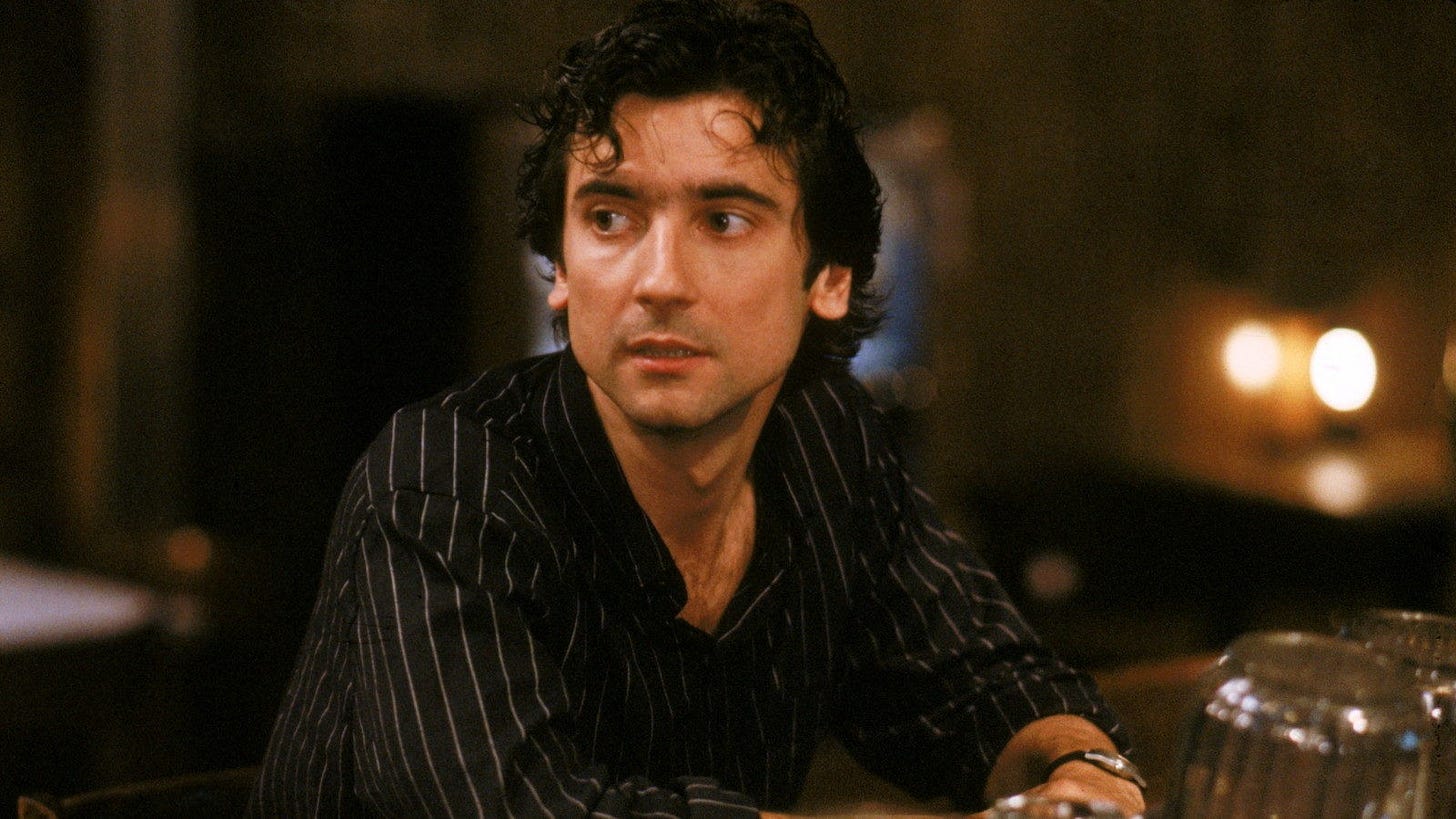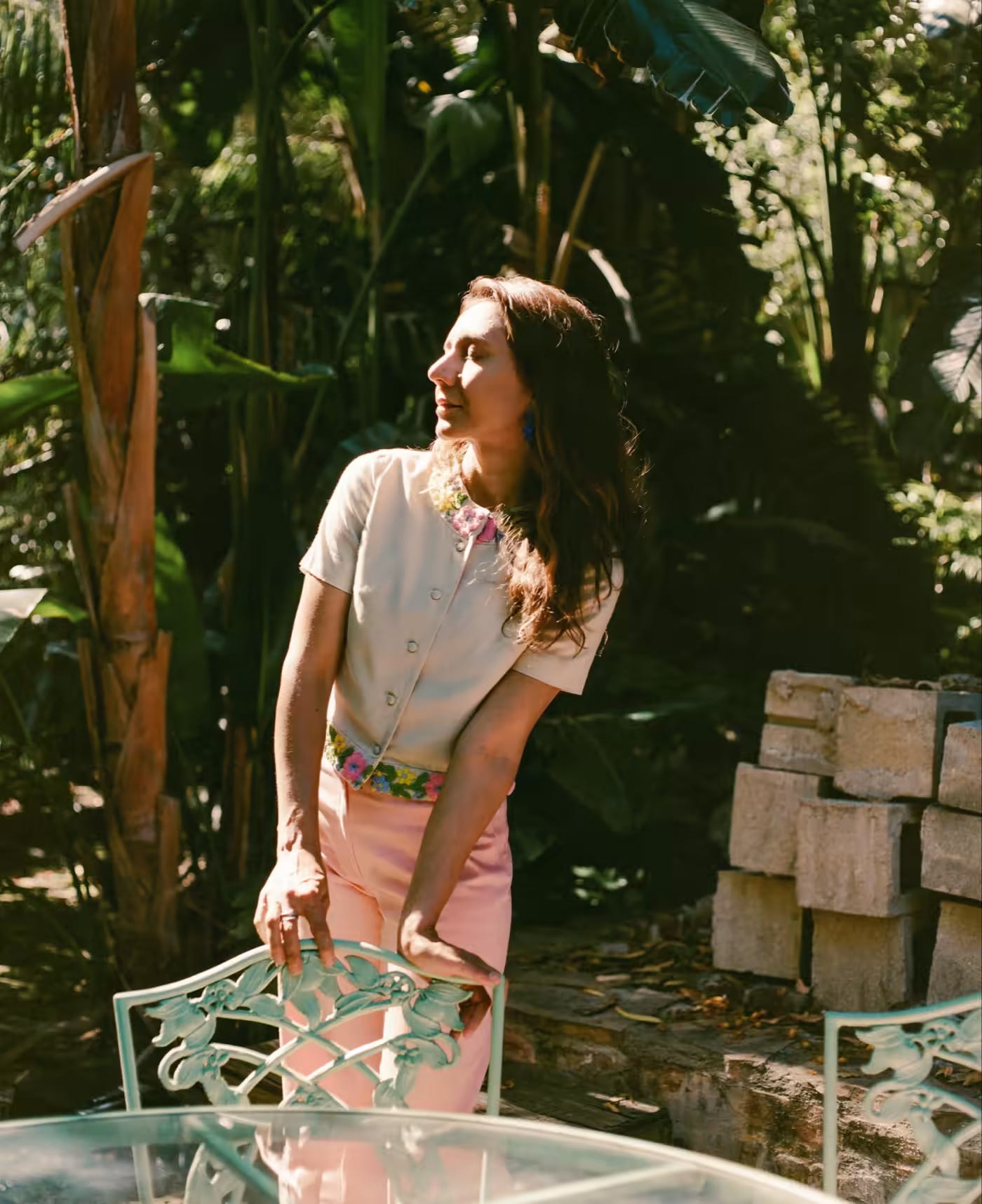If you enjoyed my interview with Caroline Polachek about her style and aesthetics, you’ll like this next one. For the Financial Times, I spoke with the novelist Ottessa Moshfegh about her lifelong love of fashion. Every profile of Moshfegh makes her sound intimidatingly smart and kind of judgmental, so of course I was worried that she would think I was an idiot. (A perpetual concern.) It was a great conversation, though. Like Polachek, Moshfegh thinks deeply about clothing and speaks in near-perfect quotes. With this story, I also discovered my new favorite type of interview: the ones where you talk to someone really intelligent about something they’re passionate about that isn’t their work.
Last week, Rachel Tashjian wrote about the historic relationship between the worlds of literature and fashion—a relationship that seems to have languished in recent years. (It takes a killer Zadie Smith spread in British Vogue for everyone to say: Wait, why aren’t we doing more of this?) As Rachel noted, Moshfegh is one author with real ties to the fashion industry. In the last four-ish years, she’s walked in a runway show for Maryam Nassir Zadeh, appeared on the cover of Vogue Italia, and written show notes for Proenza Schouler. But her love of clothes goes way, way back.
Moshfegh got into thrift shopping as a teenager in the ’90s and worked as a vintage dealer during grad school. She told me that she’s still addicted to buying secondhand clothing, which she sells on Depop in order to slim down her enormous collection. “There’s no way that I could ever post everything that I have hoarded. It’s bad. It’s kind of out of control,” Moshfegh told me. She sounded grim.
Later on, I asked if she collects archival fashion images—I was thinking of Polachek’s meticulous digital filing system, as well as my own Pinterest habits—and she said no, not really. She’d rather have a piece of clothing than a photo of it. “There’s something about what the actual item of clothing is transmitting, beyond the superficial,” she said, adding that she knows that sounds kind of silly and woo-woo. But it’s also why she has trouble buying new clothes, as opposed to vintage.
Moshfegh is from Newton, Massachusetts. I grew up one town over, and when I was in high school in the mid-2000s, I made pilgrimages to the same vintage emporium in Cambridge that she spent so much time at as a teenager. Our motivations were different, though. Where she was channeling Kurt Cobain, I was under the influence of Amy Astley’s Teen Vogue, which was always running features on Manhattan nepo babies with closets full of vintage Chanel. I understand now that their quilted bags and tweed jackets were hand-me-downs from their famous interior designer mothers. And yet part of me truly believes that somewhere in America there is, as was perhaps not promised but heavily implied, a normal suburban thrift store bursting with cheap Chanel purses. I’ve just never figured out where it is.
Moshfegh was also really into models as a teenager, specifically Shalom Harlow, Helena Christensen, and Claudia Schiffer. She explained that it takes a long time to start understanding the language and references conveyed through the color, texture, and silhouette of clothing. “And without having the wisdom of the 42 years I have now, as a very young person, I think it was the models themselves, inhabiting the spirit of the clothes, that made such an impression on me,” she said. “It was like conjuring a character that had just stepped out of a world that I had never been in before, showing me, wordlessly, with the language of gesture and posture and movement and attitude, where she comes from and who she is.” (And that quote didn’t even make it into the story.)
This makes so much sense to me, because I was infatuated with models as a teen, too. Nobody is an encyclopedia at birth, so you gravitate toward what feels accessible while you slowly soak up the rest. Naturally, a fascination with models at an early age will do wonders for a person’s long-term mental health, whether it’s the ’90s or the ’00s.
“I knew that I couldn't look like these women,” Moshfegh told me. “And I think it made me feel pretty shitty. And I realized, I don’t know, like 20 minutes ago, that it really didn't matter, because fashion was for everyone. We're all part of that language.”
We are. Go ahead and read the story to learn what Moshfegh wears while writing. If you have trouble accessing it, send me an email and we’ll figure it out.
Scorsese Corner
After years of avoiding the films of Martin Scorsese (“Boy Cinema”), I have asked Alex to curate a selection of his movies in advance of Killers of the Flower Moon. This is Scorsese Corner.

Spoiler warning… this movie has been out for 38 years… I’m going to talk about it.
I turned 32 a week ago. To celebrate, Alex and I went out to dinner, which proceeded at such an alarming pace that we landed back on the sidewalk at 7:35 p.m., while it was still light out. A little drunk on Sancerre and high on the prospect of starting a movie at a reasonable time, I suggested we watch the third film in our Scorsese series: the situationally inappropriate After Hours.
For some reason, I thought After Hours was going to be 90 minutes of streetlights on wet pavement, I suppose because that’s my favorite part of Taxi Driver and I’m a hopeful person. Wrong: After Hours is Beau Is Afraid! An office worker named Paul Hackett (Griffin Dunne) follows a girl to SoHo one night and somehow can’t get home, even though it’s late and he’s really tired, as though the universe is determined to trap him there forever. Like Beau, Paul is stuck in a claustrophobic, demented version of reality. Unlike Beau—poor, pitiable, childlike Beau—Paul is occasionally charming and frequently kind of a self-centered asshole. This is good, because you don’t mind so much when he’s chased down by an angry mob or entombed in paper mache. Whereas Beau Is Afraid just made my heart hurt, After Hours was an exercise in mild anguish and a lot of fun.
Of all the weirdos in After Hours, I keep thinking about the sculptress Kiki Bridges (Linda Fiorentino). Paul goes to Kiki’s loft to meet up with Marcy (Rosanna Arquette), the girl he encountered uptown; Marcy isn’t there when he arrives, but Kiki is, shirtless and working on a sculpture of a man crouched in a state of terror, as though he’s about to get scooped up by a giant hawk. Throughout the movie, Kiki’s attitude toward Paul lands somewhere between tired disapproval and benevolent apathy. She tolerates him.
Paul, approaching Kiki’s sculpture: I like that.
Kiki: Do you?
Paul: Very much. It reminds me of that Edvard Munch painting. What is it, “The Shriek”?
Kiki: “The Scream.”
Fiorentino manages to hit the lowest, dullest tone possible on that line. Kiki adds a great note to After Hours because so many of its characters (so many of its women) desperately want something from Paul. There’s the despondent cocktail waitress who dresses and acts she lives in 1965 (and, after Paul rejects her, puts up Wanted signs with his likeness all over the neighborhood). There’s the Mister Softee driver played by the queen Catherine O’Hara who really needs to dress Paul’s wound (and, when denied, revs up her truck to lead his manhunt). In certain cases, Paul does actually owe something to the people he encounters, like the cab driver and diner owner he can’t pay, who are justifiably irate.
But Kiki doesn’t want anything from Paul. It’s refreshing. It’s a reprieve from the madness. She’s relatively kind to him, offering him a fresh shirt and inviting him and Marcy to the club, but her governing principle is disinterest. And, of course, a stranger’s apathy is its own curse when you’re in a bad situation. Paul shows up to the club looking for Kiki’s help, and she doesn’t even notice that the bouncer is trying to force him into getting a mohawk for Mohawk Night.
Anyway, I love the striped black shirt (pictured above) that Kiki gives Paul when he stains his white button-down. I would like one just like it, so if you have any leads, please let me know.
Considering that Griffin Dunne was 30 when After Hours came out in 1985, I am concerned that I now look really old,
Eliza
PS—I’m thinking about pitching a story about rewatching movies over and over, as I have been informed by my loved ones that it’s “interesting” and “weird” that I’ve watched Julie & Julia six times so far this year. (Phantom Thread takes second place, with three watches in 48 hours… help.) I would like to speak with other people who do this. If there’s someone in your life who has watched the same movie or read the same book four zillion times—anyone who is not a small child on a Frozen tear, and ideally someone who will make this kind of behavior look cool—I would love to be put in touch.




